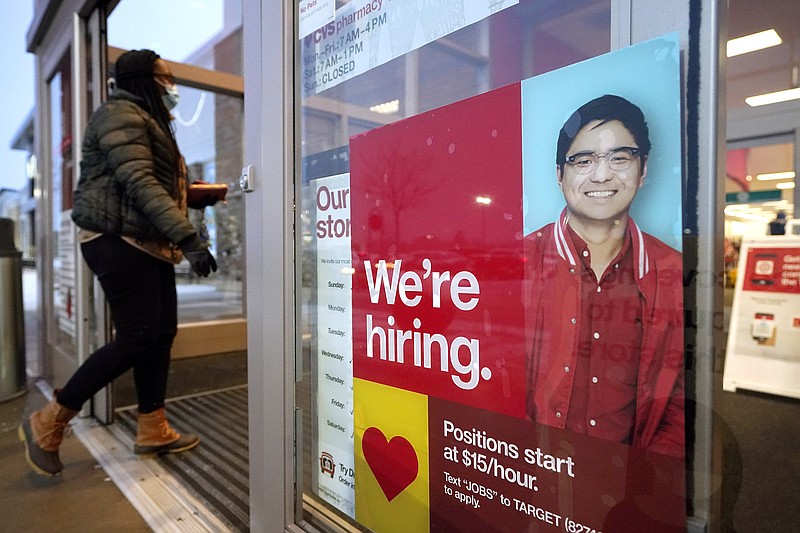Despite a nationwide drop in the number of Americans filing new unemployment claims last week, initial filings for jobless benefits rose in Tennessee last week.
The Tennessee Department of Labor and Workforce Development said Thursday that 12,077 Tennesseans, including 348 in Hamilton County and 140 in Bradley County, filed new claims for jobless benefits last week. The statewide total of initial claims was up by 3,961 from the previous week and remained elevated above what Tennessee was seeing for jobless claims at the end of last year.
According to the personal finance site WalletHub, Tennessee ranked as the seventh lowest state among the 50 states and the District of Columbia for the pace of its jobs recovery during the pandemic.
Nationwide, the number of Americans seeking unemployment benefits fell sharply last week in a sign that layoffs may have eased, though applications for aid remain at a historically high level.
Jobless claims declined by 111,000 from the previous week to a seasonally adjusted 730,000, the Labor Department said Thursday. It is the lowest figure since late November and the sharpest one-week decline since August. Still, before the virus erupted in the United States last March, weekly applications for unemployment benefits had never topped 700,000.
The latest figures coincide with a weakened job market that has made scant progress in the past three months. Hiring averaged just 29,000 a month from November through January. Though the unemployment rate was 6.3% in January, a broader measure that includes people who have given up on their job searches is closer to 10%.
All told, 19 million people were receiving unemployment aid as of Feb. 6, up from 18.3 million the previous week. About three-quarters of those recipients are receiving checks from federal benefit programs, including programs that provide jobless aid beyond the 26 weeks given by most states.
Mark Hamrick, an economic analyst for Bankrate.com, said the nationwide drop was more than expected, falling to the lowest level since November.
"As the Covid-19 pandemic curve has begun to flatten and more vaccines become available, the hope is that we may now more substantially lift the employment curve." he said. "The expected rolling reopening of the economy in the coming months could well bring a kind of continuing party in the form of so-called revenge spending to make up for lost time."
A new Bankrate survey finds that 76% of Americans say they'd be comfortable going out in public to visit businesses such as retailers, restaurants and malls after receiving the COVID-19 vaccine.
Last week's decline in applications was broad-based across most of the country, with 36 states and the District of Columbia reporting fewer people seeking unemployment benefits. That suggests that employers might be cutting fewer jobs.
"The drop may be signaling a turning point for labor market conditions," said Nancy Vanden Houten, lead economist at Oxford Economics.
Still, she cautioned, "the data continue to suffer from issues of backlogs and fraud. We expect a more sustainable labor market recovery to take hold closer to mid-year with broader vaccine distribution and the arrival of more fiscal support."
In the meantime, economists say, widespread business shutdowns in states hit by the ice storms could cause an increase in applications for jobless aid in the coming weeks.
- Compiled by Dave Flessner
